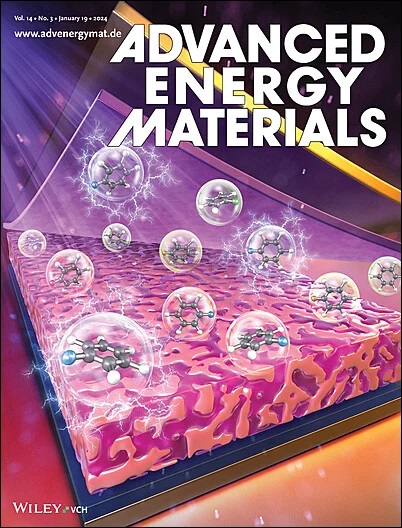Crystalline‐Amorphous Interface‐Triggered Electron Redistribution on Copper(II) Sulfide@Metal (Ni, Co, and Fe) Oxyhydroxides for Ultra‐Efficient Overall Water/Seawater Splitting
IF 24.4
1区 材料科学
Q1 CHEMISTRY, PHYSICAL
引用次数: 0
Abstract
Rearranging the electronic orbitals of metal sites through interface engineering is the breakthrough for achieving high efficiencies in hydrogen/oxygen evolution reactions (HER/OER) on bimetallic catalysts. Here, via a multistep liquid‐phase synthesis strategy, the crystalline‐amorphous (c‐a) interface is built by coating amorphous oxyhydroxide layer on the surface of crystallized copper(II) sulfide (CuS@MOOH, M = iron (Fe), cobalt (Co) and nickel (Ni)) with an internal cavity. For HER, c‐a interface facilitates the electron filling of the 3d orbitals of Cu, thereby enhancing the coordination between Cu sites (Cu求助全文
约1分钟内获得全文
求助全文
来源期刊

Advanced Energy Materials
CHEMISTRY, PHYSICAL-ENERGY & FUELS
CiteScore
41.90
自引率
4.00%
发文量
889
审稿时长
1.4 months
期刊介绍:
Established in 2011, Advanced Energy Materials is an international, interdisciplinary, English-language journal that focuses on materials used in energy harvesting, conversion, and storage. It is regarded as a top-quality journal alongside Advanced Materials, Advanced Functional Materials, and Small.
With a 2022 Impact Factor of 27.8, Advanced Energy Materials is considered a prime source for the best energy-related research. The journal covers a wide range of topics in energy-related research, including organic and inorganic photovoltaics, batteries and supercapacitors, fuel cells, hydrogen generation and storage, thermoelectrics, water splitting and photocatalysis, solar fuels and thermosolar power, magnetocalorics, and piezoelectronics.
The readership of Advanced Energy Materials includes materials scientists, chemists, physicists, and engineers in both academia and industry. The journal is indexed in various databases and collections, such as Advanced Technologies & Aerospace Database, FIZ Karlsruhe, INSPEC (IET), Science Citation Index Expanded, Technology Collection, and Web of Science, among others.
 求助内容:
求助内容: 应助结果提醒方式:
应助结果提醒方式:


